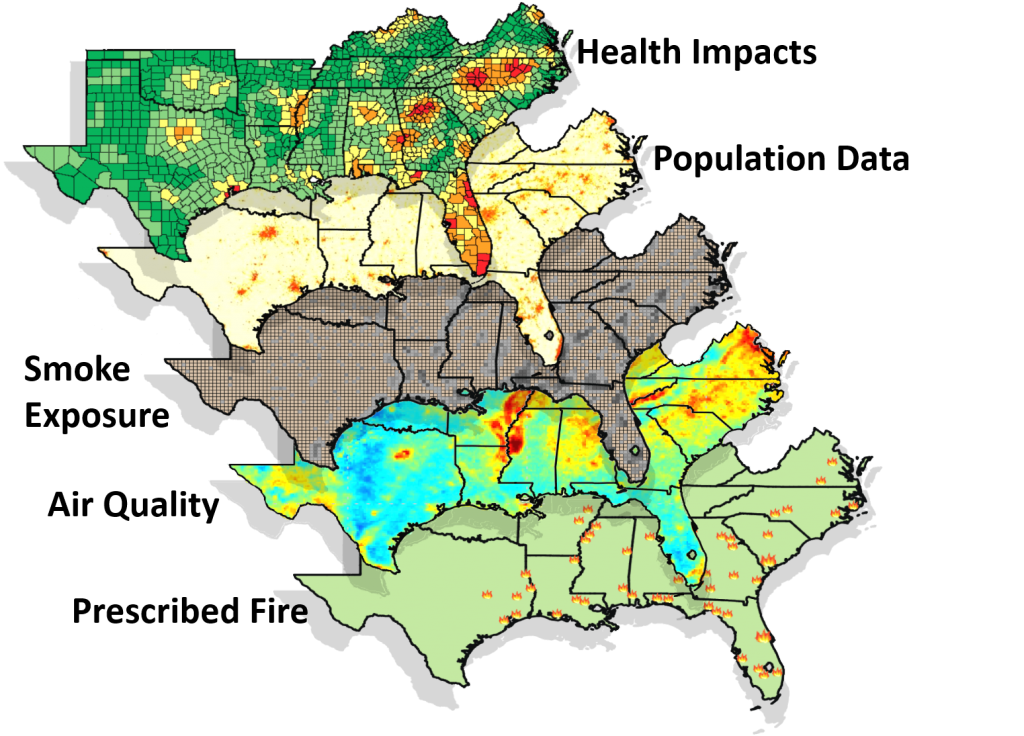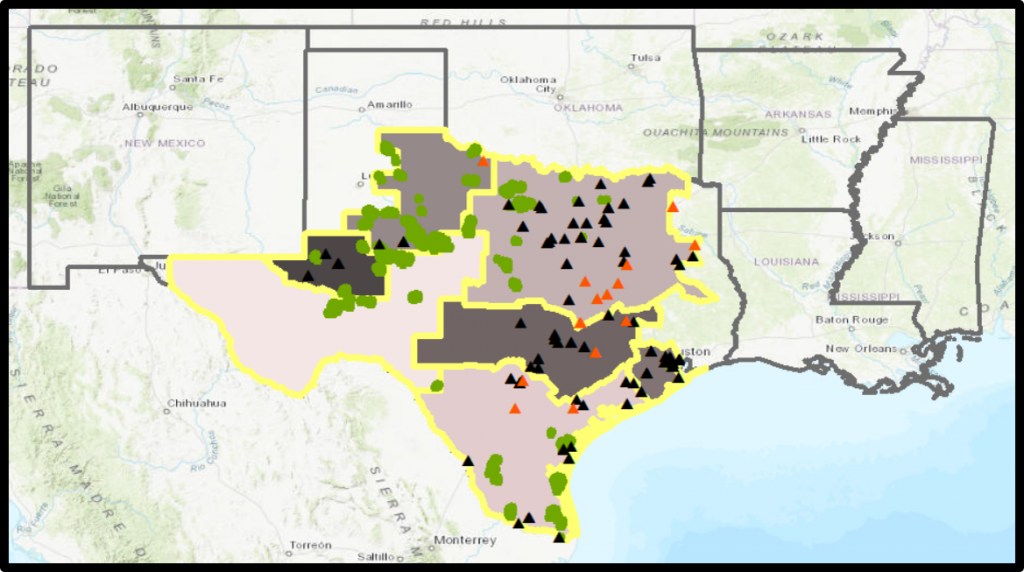Google Scholar Profile
Wildland fires and air quality
Although wildland fires are among the largest source of emissions in the U.S., their air quality impacts remain uncertain. As wildfire and the use of prescribed fire continue to increase and extend to additional areas, while emissions from other sectors decrease, their weight on U.S. air quality will grow. A major goal of my research at NC State is to investigate the connections between wildland fires and air quality. Specifically, we have led efforts studying the links between the public health objectives of air quality engineering and the natural resources objectives of land management in the Southeastern U.S. Our research using air quality models and data analysis provides insights that can inform efforts to mitigate the negative consequences of smoke—we have reported some of the first regional estimates of smoke impacts on air quality and health, identified major uncertainties and key research needs to improve impact assessments, and explored the implications of fire-related air pollution on land management. In this work, we have collaborated with scientists and land managers from the U.S. Forest Service, NC Division of Parks and Recreation, U.S. Environmental Protection Agency, and U.S. Geological Survey.
Connections between wildland fire and public health.
Climate impacts on air quality and health
Work conducted by our research group has provided new insights into the interactions between climate, air quality, public health, and policy. We have led a sustained effort to quantify and compare propagation of major uncertainties in climate projections—greenhouse gas emissions scenario, earth system response, and natural variability—to estimates of climate change impacts on air quality. Towards this end, we use coupled human-earth systems modeling frameworks to generate integrated economic, climate, and air pollution projections. This research constitutes one of the largest modeling efforts to date investigating the impacts of climate change on air pollution, and includes some of the first efforts to apply initial-condition ensembles and examine climate sensitivity in air quality simulations. Our findings show the important roles of natural variability and climate system response in air quality-climate interactions, and how uncertainties related to these factors can be comparable to those associated with emissions of climate-forcing agents. They also provide a basis for modeling strategies able to produce more robust projections of climate change impacts and better inform policies aiming to mitigate them.
Variability in projections of climate change impacts on ozone pollution.
Power systems, air quality, and public health
In this research, we have coupled power system models with various types of air quality models—dispersion, reduced-complexity, and chemical transport models—to project the effects of energy transitions on air pollution, and assess how changes to power system operations can mitigate the health and climate impacts of emissions from electricity generation. We developed an approach to internalize real-time health damages at the generating unit level into operational power system decision-making, and showed that strategic shifts in the dispatch of power plants and deployment of grid-scale energy storage can provide significant human health benefits at a comparatively modest cost. Our research has also provided estimates of the costs and benefits of diverse pathways to decarbonize the Texas power grid, including carbon taxes, internalizing health impacts into operations, and increased use of renewable energy. In research focused on China’s rapidly evolving energy sector, we quantified the climate and human health impacts arising from the country’s ongoing transition to economic dispatch of power plants and show that significant additional benefits can be attained by incorporating emission externalities in electricity generation costs.
Electricity generating units in the Texas Interconnection.
Air quality modeling in Latin America and in low- and middle-income countries
In our research, we seek opportunities to explore the use of modeling tools to help mitigate air pollution in low- and middle-income countries. I am particularly interested in supporting strategies to improve air quality in Latin America. We are collaborating with researchers from Universidad de los Andes and Universidad de la Salle to study air pollution in Colombia. Our simulations of air quality in Bogota are the first use of a comprehensive chemical-transport model for source apportionment and scenario analysis in Colombia’s largest city. Additional ongoing research in South America is assessing the impacts of deforestation on regional pollution and health, and their connections to climate change policy. We also contributed to the development of an inverse modeling framework that relies on satellite chemical data assimilation and a hemispheric air quality modeling platform to infer NOx emissions. Using products from two satellite instruments, we applied the framework to estimate NOX emissions over the Northern Hemisphere, including global regions where emissions estimates are highly uncertain.
Air quality in Bogota, Colombia.
Computational methods in air quality modeling
We are applying computational and numerical methods to develop new tools that can be used to simulate the interactions between environmental and human systems. Towards this end, we are setting up a modeling system that builds on the high-performance computing resources at NC State. Techniques being explored include adaptive grid modeling, reduced-form modeling, and machine learning approaches. We will use these to investigate different applications, including dynamic grid refinement in global chemical transport models, population-driven adaptive grid modeling for health impacts, reduced-form models for wildfire health and economic impacts, and machine learning algorithms for air quality forecasting.
Fixed- and adaptive-grid simulations of a fine particulate matter (PM2.5) plume.






